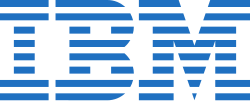Wordmark: Difference between revisions
No edit summary |
m clarification on logo types. and extra examples. |
||
| Line 27: | Line 27: | ||
In the [[United States]] and [[European Union]],<ref>{{Cite web|url=https://oami.europa.eu/ohimportal/en/trade-mark-definition|title=Trade mark definition|publisher=Office for Harmonization in the Internal Market}}</ref> a wordmark may be registered, making it a protected [[intellectual property]]. In the United States, the term wordmark may refer not only to the graphical representation, but the text itself may be a type of [[trademark]].<ref>{{cite web | year = 2007 | url = http://www.uspto.gov/main/glossary/index.html#w | title = Glossary (w - x) | work = Guides | publisher = United States Patent and Trademark Office | accessdate = 2007-11-23}}</ref> |
In the [[United States]] and [[European Union]],<ref>{{Cite web|url=https://oami.europa.eu/ohimportal/en/trade-mark-definition|title=Trade mark definition|publisher=Office for Harmonization in the Internal Market}}</ref> a wordmark may be registered, making it a protected [[intellectual property]]. In the United States, the term wordmark may refer not only to the graphical representation, but the text itself may be a type of [[trademark]].<ref>{{cite web | year = 2007 | url = http://www.uspto.gov/main/glossary/index.html#w | title = Glossary (w - x) | work = Guides | publisher = United States Patent and Trademark Office | accessdate = 2007-11-23}}</ref> |
||
The wordmark is one of several different types of logos<ref>{{Cite web|url=https://www.freelancer.com/community/articles/types-of-logos|title=Types of logos: How to create a logo for your brand {{!}} Freelancer Community|website=www.freelancer.com|access-date=2016-10-12}}</ref>, and is among the most common. It has the benefit of containing the brand name of the company (ie the [[Coca-Cola|Coca-Cola logo]]) as opposed to the [[Brandmark|brand mark]] used by [[Apple Inc.|Apple]]. |
|||
==See also== |
==See also== |
||
Revision as of 11:49, 12 October 2016
The wordmarks of Coca-Cola, IBM and Microsoft are among the world's most powerful.
The use of the Government of Canada's wordmark is regulated by government policy.[1]
A wordmark, word mark or logotype is usually a distinct text-only typographic treatment of the name of a company, institution, or product name used for purposes of identification and branding. Examples can be found in the graphic identities of the Government of Canada, FedEx, Microsoft, and Wikipedia. The organization name is incorporated as a simple graphic treatment to create a clear, visually memorable identity. The representation of the word becomes a visual symbol of the organization or product.
In the United States and European Union,[2] a wordmark may be registered, making it a protected intellectual property. In the United States, the term wordmark may refer not only to the graphical representation, but the text itself may be a type of trademark.[3]
The wordmark is one of several different types of logos[4], and is among the most common. It has the benefit of containing the brand name of the company (ie the Coca-Cola logo) as opposed to the brand mark used by Apple.
See also
References
- ^ Treasury Board of Canada Secretariat (10 May 2012). "Canada Wordmark". Federal Identity Program Policy. Retrieved 7 September 2012.
- ^ "Trade mark definition". Office for Harmonization in the Internal Market.
- ^ "Glossary (w - x)". Guides. United States Patent and Trademark Office. 2007. Retrieved 2007-11-23.
- ^ "Types of logos: How to create a logo for your brand | Freelancer Community". www.freelancer.com. Retrieved 2016-10-12.
Further reading
- McWade, John. Before and After Graphics for Business. Peachpit Press: 2005. ISBN 978-0-321-33415-2.
- White, Alexander W. The Elements of Graphic Design: Space, Unity, Page Architecture, and Type. Allworth: 2002. ISBN 978-1-58115-250-0.
- Wheeler, Alina. Designing Brand Identity: A Complete Guide to Creating, Building, and Maintaining Strong Brands. Wiley: 2006. ISBN 978-0-471-74684-3.





